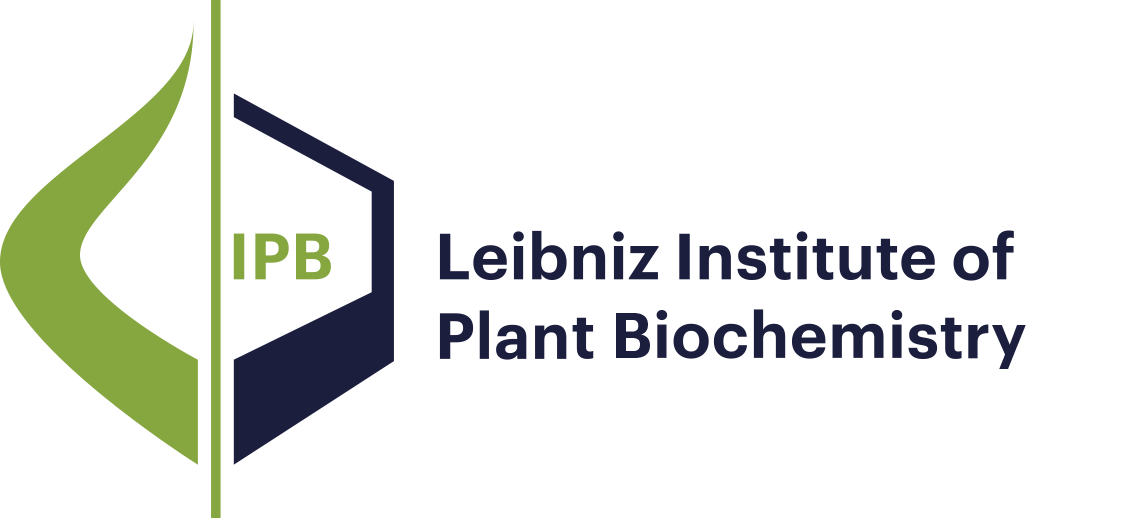- Results as:
- Print view
- Endnote (RIS)
- BibTeX
- Table: CSV | HTML
Publications
Publications
Publications
Research Mission and Profile
Molecular Signal Processing
Bioorganic Chemistry
Biochemistry of Plant Interactions
Cell and Metabolic Biology
Independent Junior Research Groups
Program Center MetaCom
Publications
Good Scientific Practice
Research Funding
Networks and Collaborative Projects
Symposia and Colloquia
Alumni Research Groups
Publications
Glandular trichomes are metabolic cell factories with the capacity to produce large quantities of secondary metabolites. Little is known about the connection between central carbon metabolism and metabolic productivity for secondary metabolites in glandular trichomes. To address this gap in our knowledge, we performed comparative metabolomics, transcriptomics, proteomics, and 13C-labeling of type VI glandular trichomes and leaves from a cultivated (Solanum lycopersicum LA4024) and a wild (Solanum habrochaites LA1777) tomato accession. Specific features of glandular trichomes that drive the formation of secondary metabolites could be identified. Tomato type VI trichomes are photosynthetic but acquire their carbon essentially from leaf sucrose. The energy and reducing power from photosynthesis are used to support the biosynthesis of secondary metabolites, while the comparatively reduced Calvin-Benson-Bassham cycle activity may be involved in recycling metabolic CO2. Glandular trichomes cope with oxidative stress by producing high levels of polyunsaturated fatty acids, oxylipins, and glutathione. Finally, distinct mechanisms are present in glandular trichomes to increase the supply of precursors for the isoprenoid pathways. Particularly, the citrate-malate shuttle supplies cytosolic acetyl-CoA and plastidic glycolysis and malic enzyme support the formation of plastidic pyruvate. A model is proposed on how glandular trichomes achieve high metabolic productivity.
Publications
An apical plasma membrane domain enriched in the regulatory phospholipid phosphatidylinositol 4,5-bisphosphate [PtdIns(4,5)P2] is critical for polar tip growth of pollen tubes. How the biosynthesis of PtdIns(4,5)P2 by phosphatidylinositol 4-phosphate 5-kinases (PI4P 5-kinases) is controlled by upstream signaling is currently unknown. The pollen-expressed PI4P 5-kinase PIP5K6 is required for clathrin-mediated endocytosis and polar tip growth in pollen tubes. Here, we identify PIP5K6 as a target of the pollen-expressed mitogen-activated protein kinase MPK6 and characterize the regulatory effects. Based on an untargeted mass spectrometry approach, phosphorylation of purified recombinant PIP5K6 by pollen tube extracts could be attributed to MPK6. Recombinant MPK6 phosphorylated residues T590 and T597 in the variable insert of the catalytic domain of PIP5K6, and this modification inhibited PIP5K6 activity in vitro. PIP5K6 interacted with MPK6 in yeast two-hybrid tests, immuno-pull-down assays, and by bimolecular fluorescence complementation at the apical plasma membrane of pollen tubes. In vivo, MPK6 expression resulted in reduced plasma membrane association of a fluorescent PtdIns(4,5)P2 reporter and decreased endocytosis without impairing membrane association of PIP5K6. Effects of PIP5K6 expression on pollen tube growth and cell morphology were attenuated by coexpression of MPK6 in a phosphosite-dependent manner. Our data indicate that MPK6 controls PtdIns(4,5)P2 production and membrane trafficking in pollen tubes, possibly contributing to directional growth.
Publications
Crosstalk between posttranslational modifications, such as ubiquitination and phosphorylation, play key roles in controlling the duration and intensity of signaling events to ensure cellular homeostasis. However, the molecular mechanisms underlying the regulation of negative feedback loops remain poorly understood. Here, we uncover a pathway in Arabidopsis thaliana by which a negative feedback loop involving the E3 ubiquitin ligase PUB22 that dampens the immune response is triggered by MITOGEN-ACTIVATED PROTEIN KINASE3 (MPK3), best known for its function in the activation of signaling. PUB22’s stability is controlled by MPK3-mediated phosphorylation of residues localized in and adjacent to the E2 docking domain. We show that phosphorylation is critical for stabilization by inhibiting PUB22 oligomerization and, thus, autoubiquitination. The activity switch allows PUB22 to dampen the immune response. This regulatory mechanism also suggests that autoubiquitination, which is inherent to most single unit E3s in vitro, can function as a self-regulatory mechanism in vivo.

